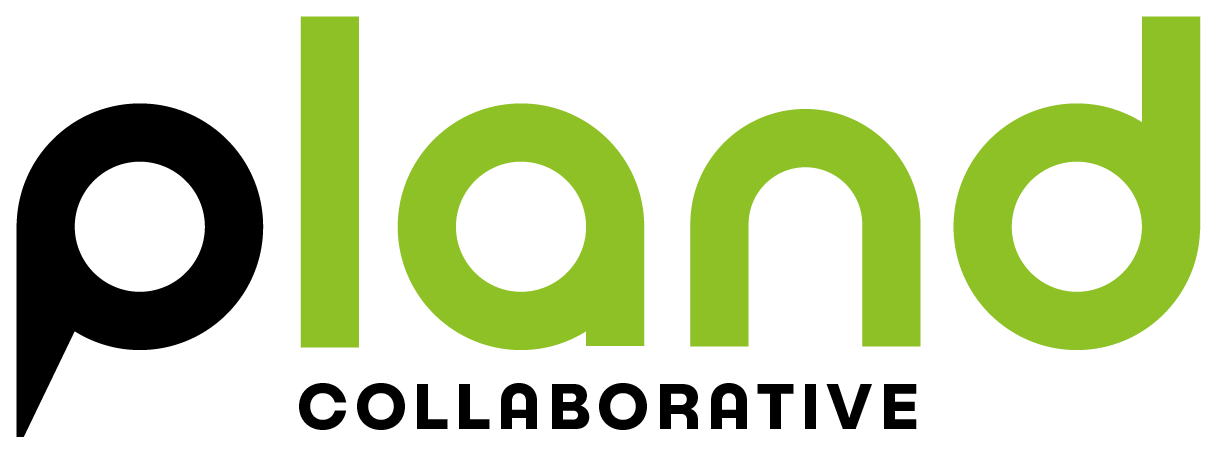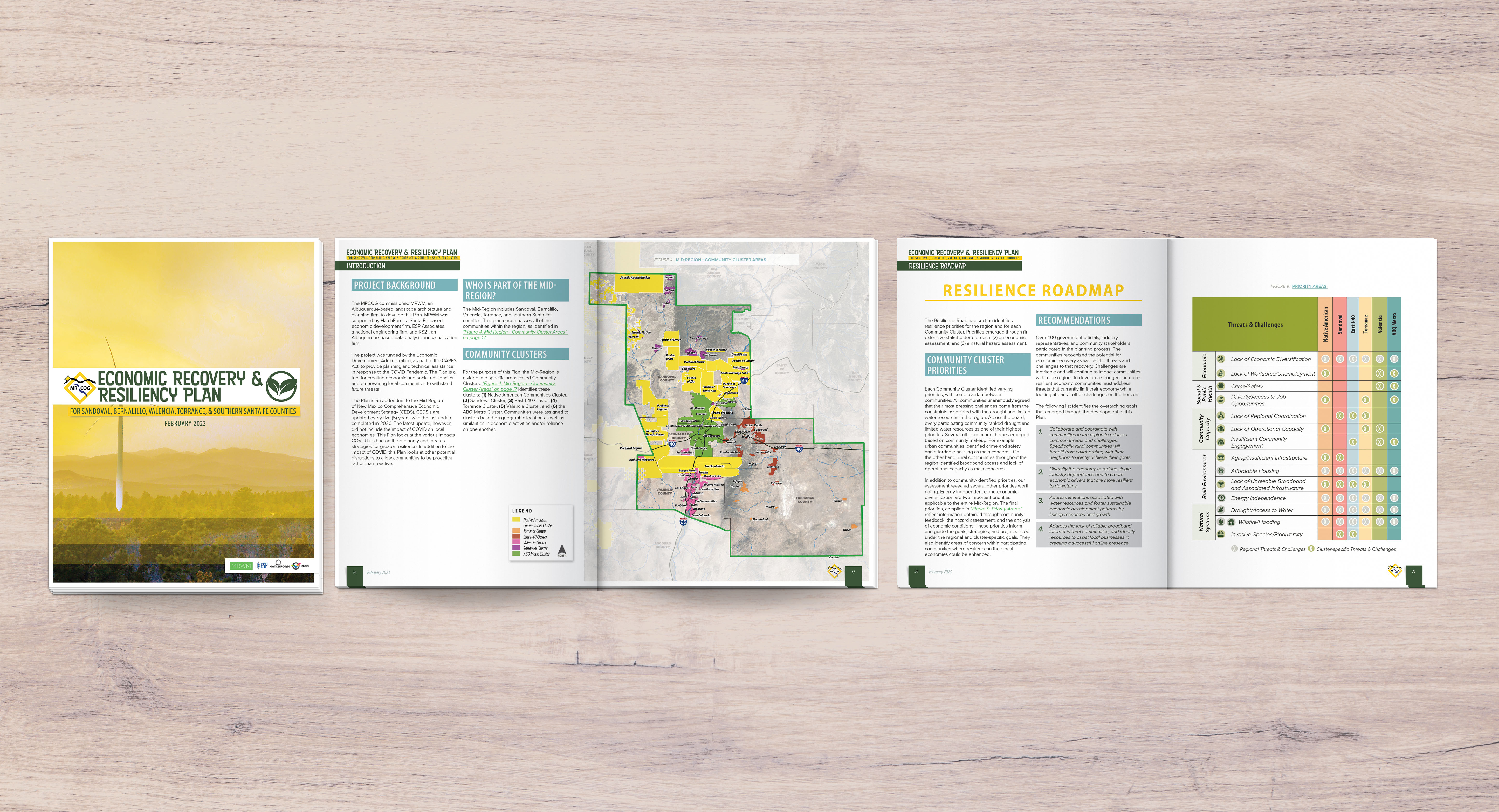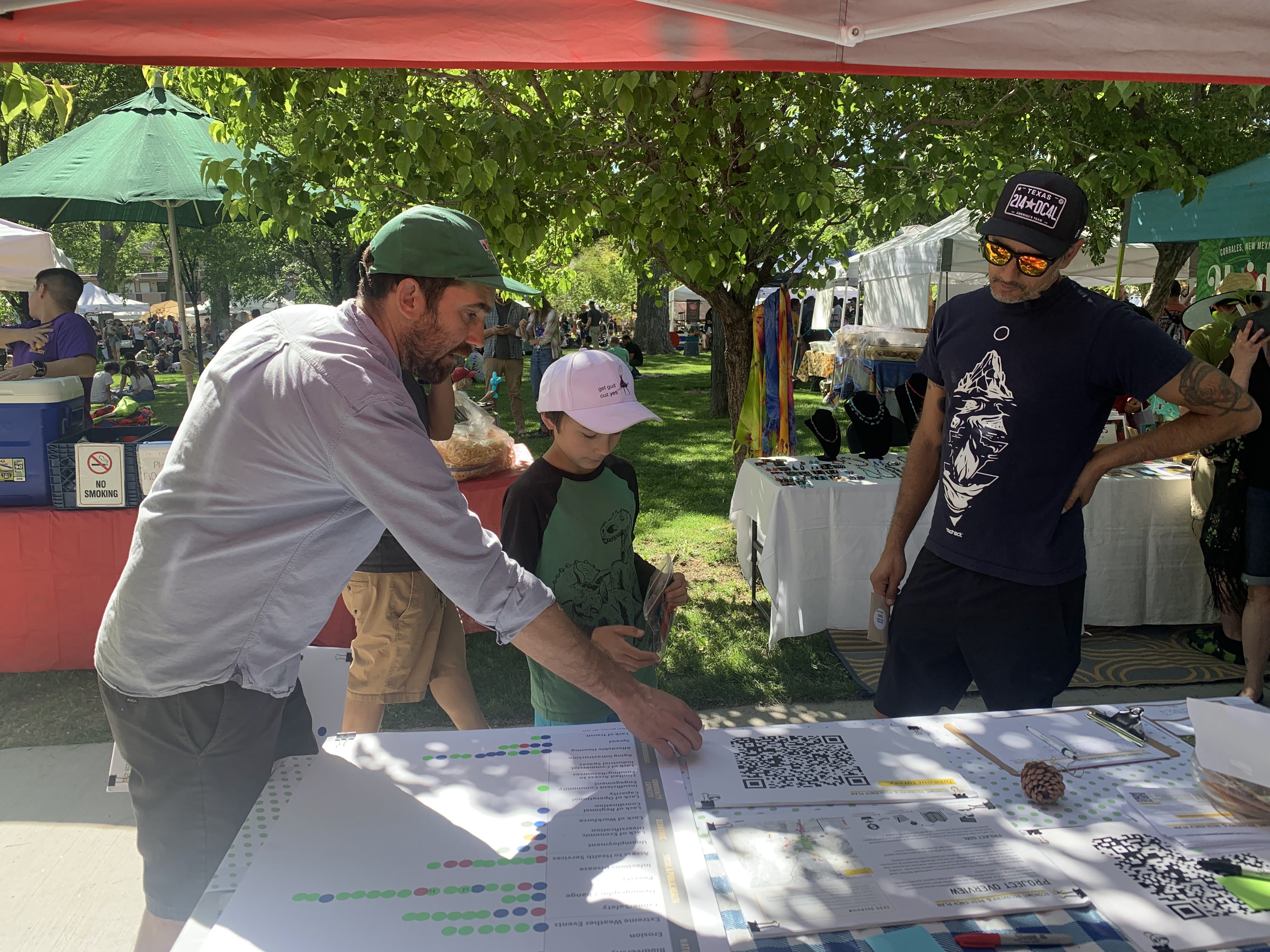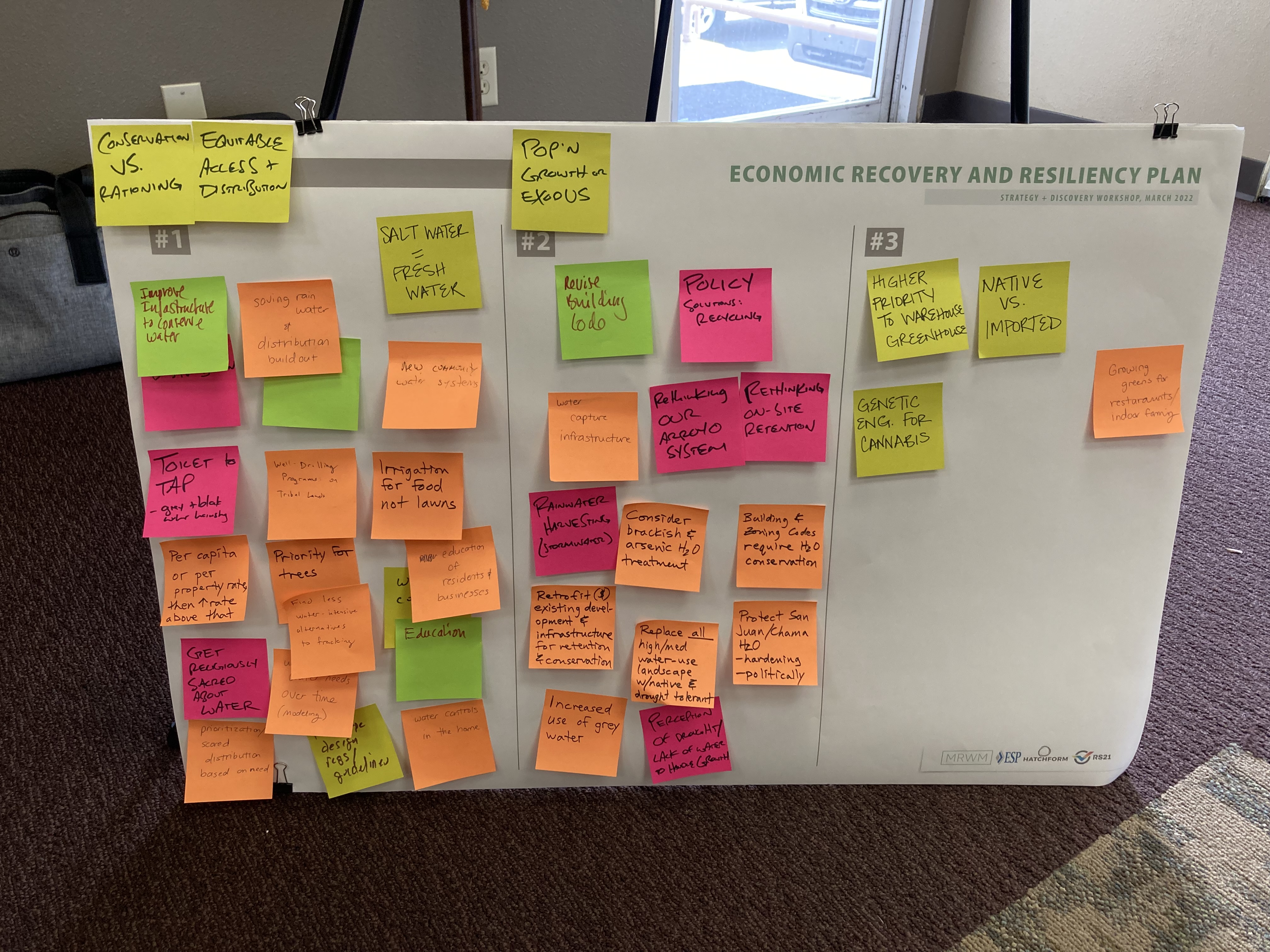The final plan lays out a “Resilience Roadmap” for communities to use along their journeys toward greater resilience and more robust economies.
The Mid-Region Council of Governments (MRCOG) region encompasses five counties, with the City of Albuquerque at its center, boasting the largest population in the State of New Mexico. This region also includes remote, rural communities, and eleven (11) tribal communities. The project was commissioned to mitigate the impact of COVID on communities' economies and address resiliency challenges specifically in rural, tribal, and small communities within the MRCOG region.
The Economic Recovery and Resiliency Plan aimed to address specific resiliency challenges and identify goals, strategies, and actions for communities to address them. Additionally, it sought to empower communities, especially those with limited resources, by providing support and building their capabilities.
During the planning process, the team engaged a wide variety of stakeholders. To ensure comprehensive representation, the region was divided into six community clusters, including one for each county and a tribal cluster. The engagement process was a hybrid approach, incorporating virtual meetings and the team's presence at community events. Notably, the team made a significant effort to meet the communities where they naturally gathered. This reduced the burden on stakeholders and encouraged participation from community members who may not traditionally engage in such processes. This approach proved successful, with over 400 stakeholders actively participating in the planning endeavor.
The final plan pinpointed a set of specific challenges, shaped by invaluable input from industry leaders, community leaders, and the public. The final plan lays out a “Resilience Roadmap” for communities to use along their journeys toward greater resilience and more robust economies. The team accomplished the plan's completion successfully, wrapping it up in around one year.







